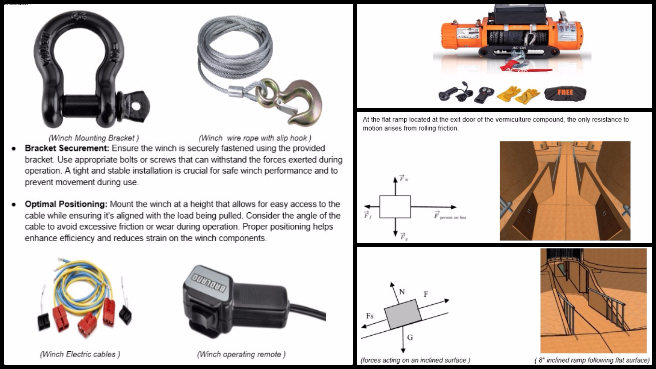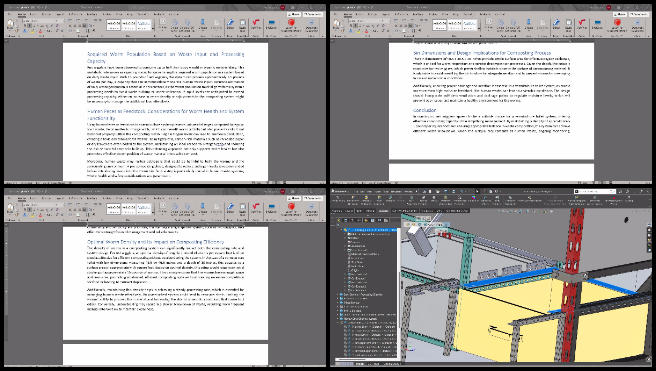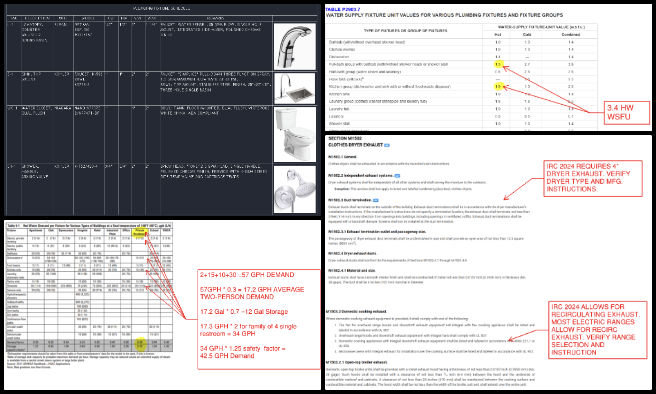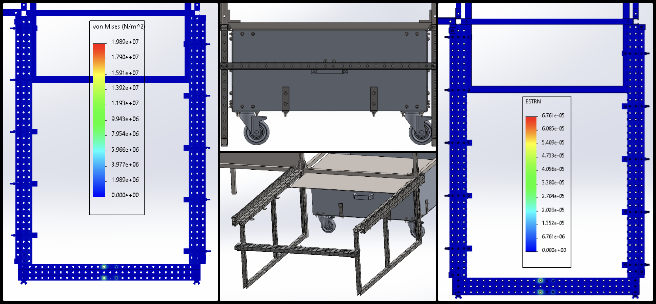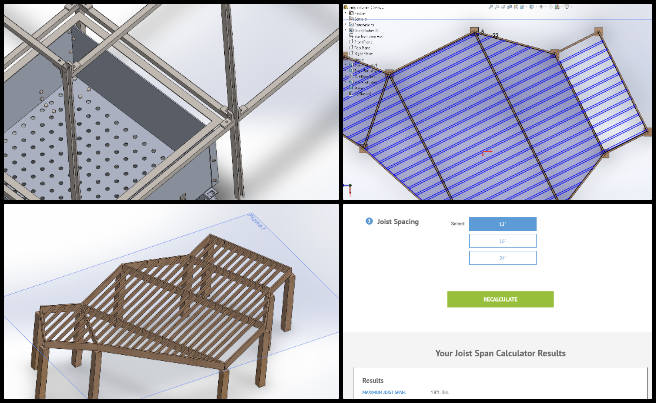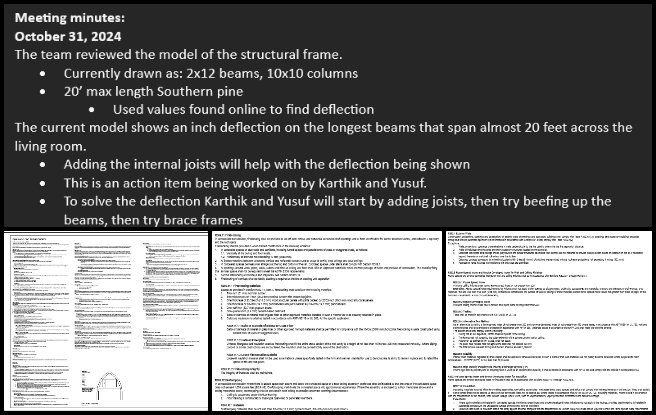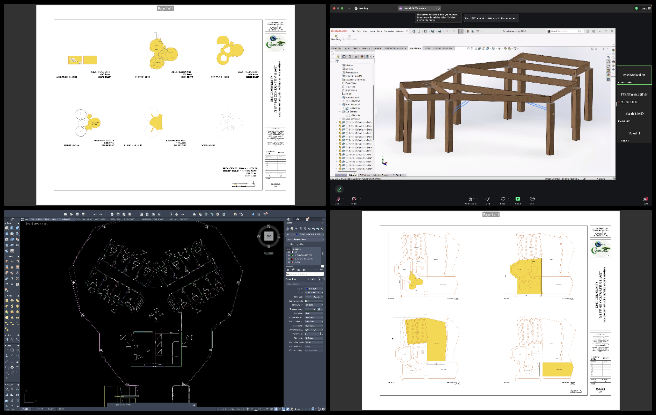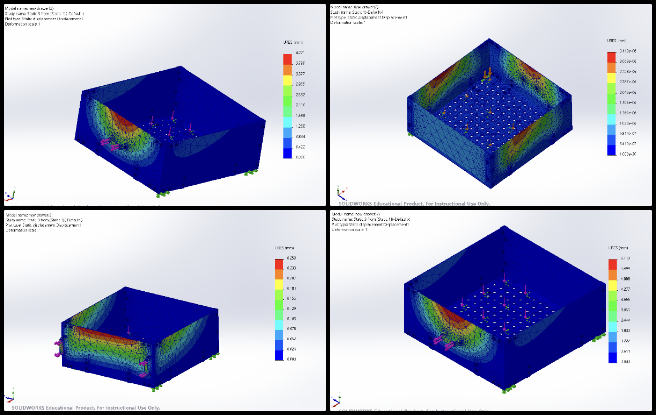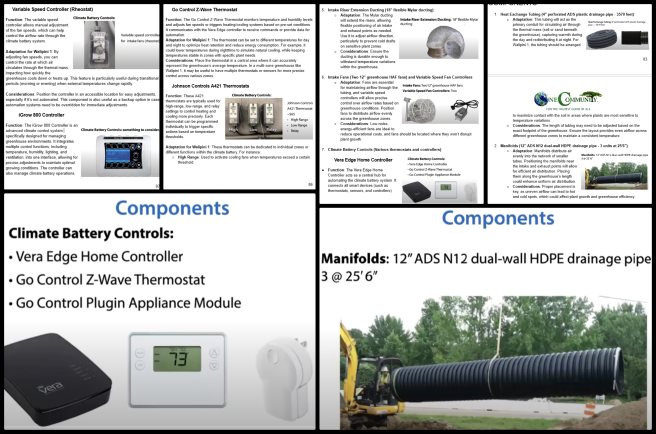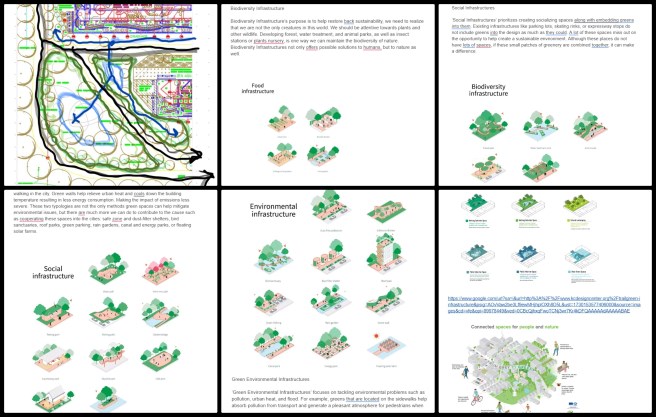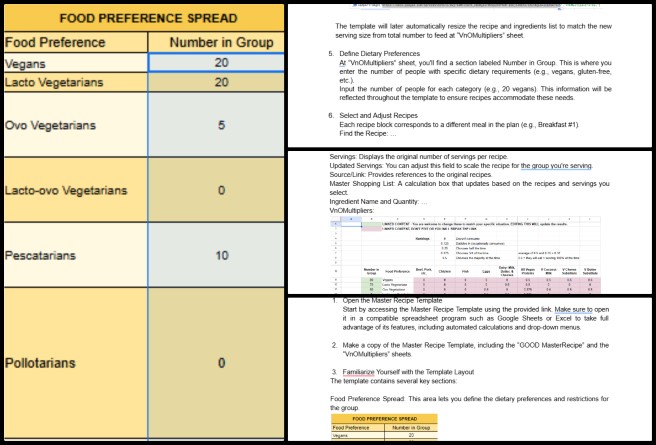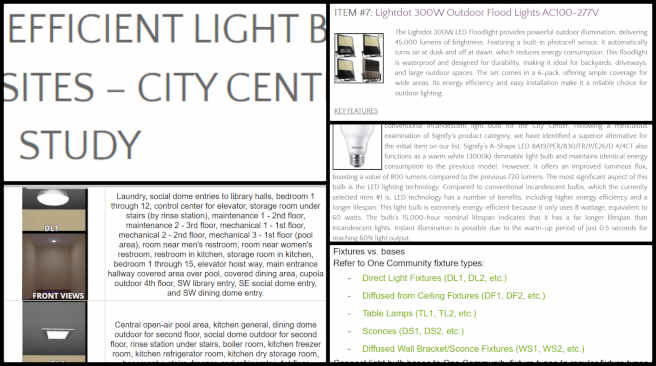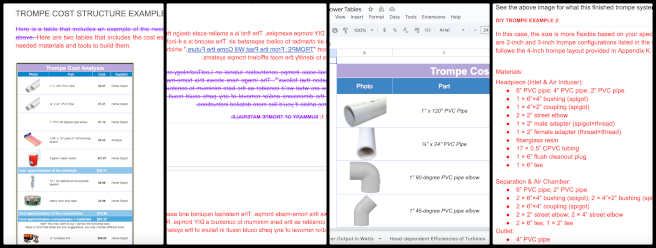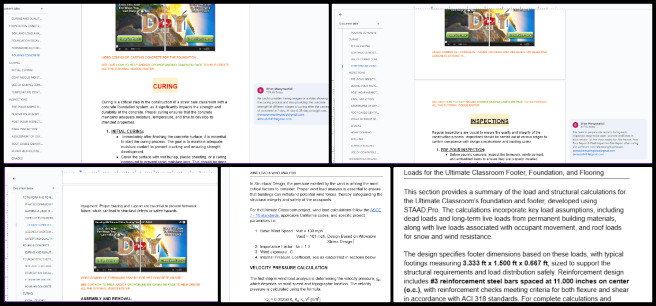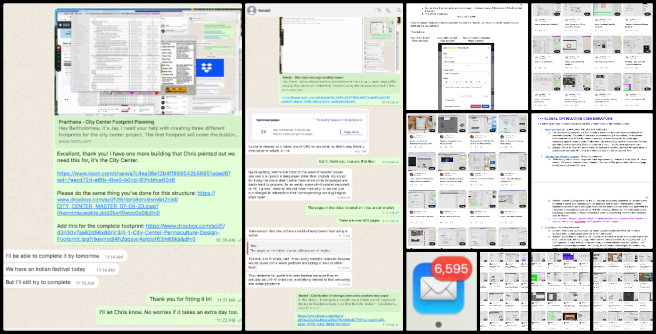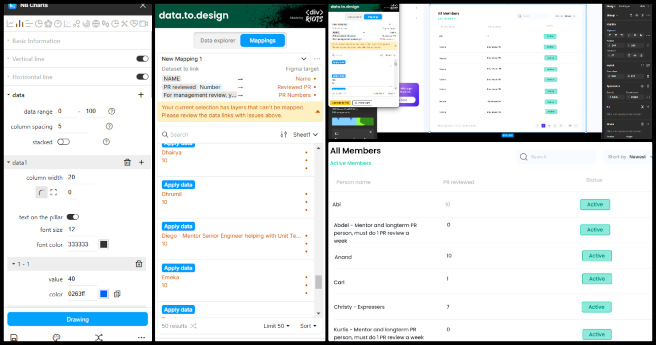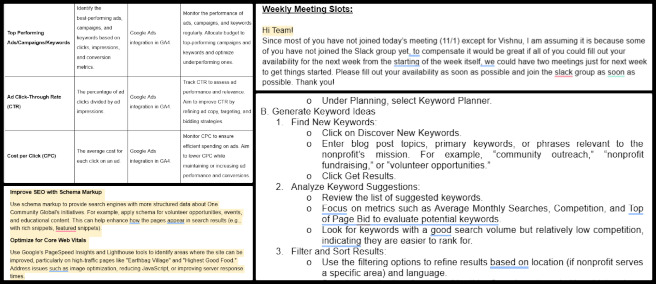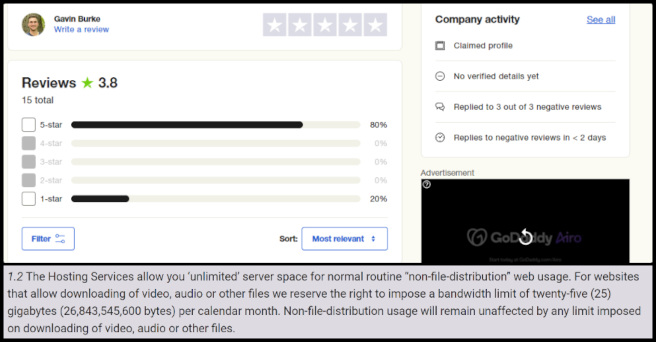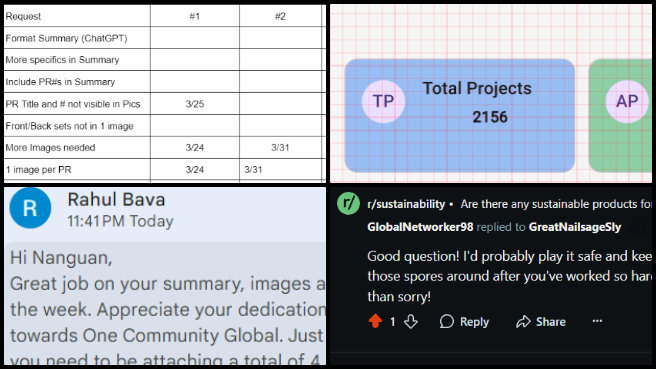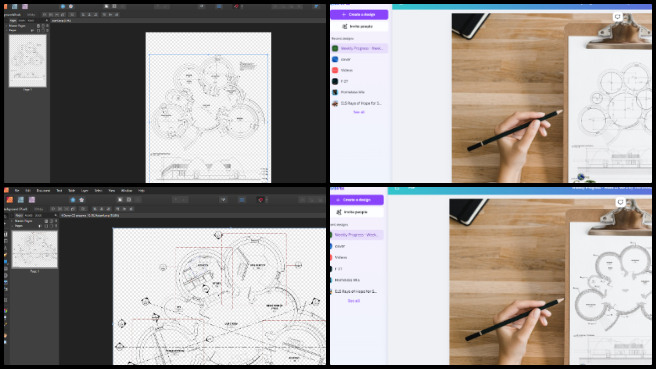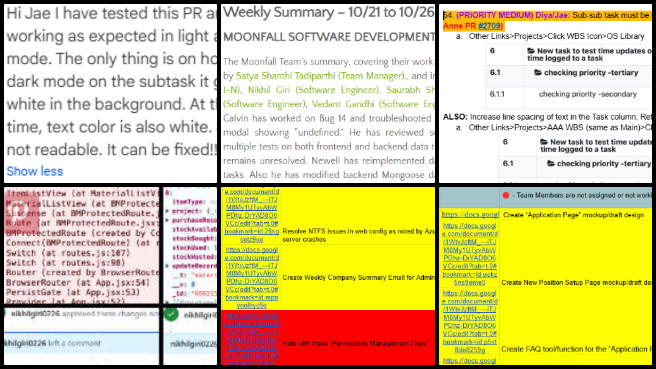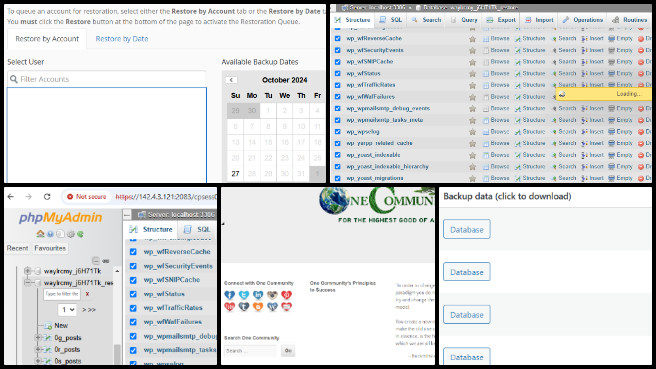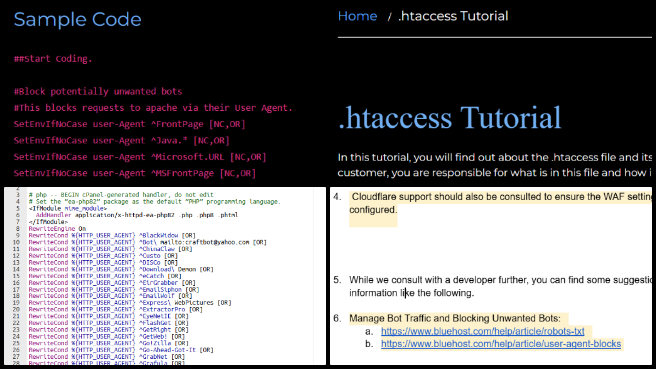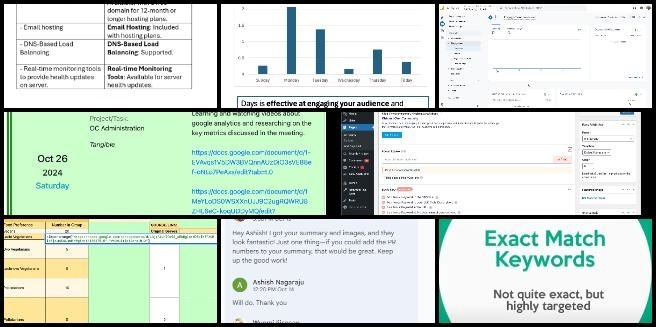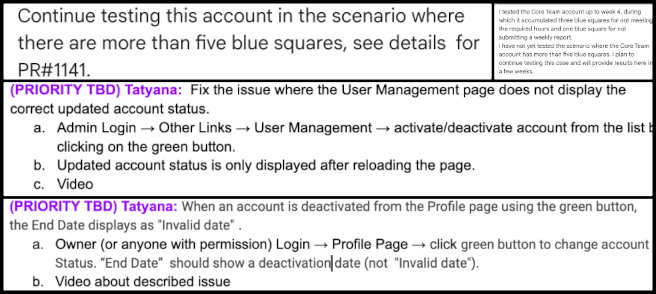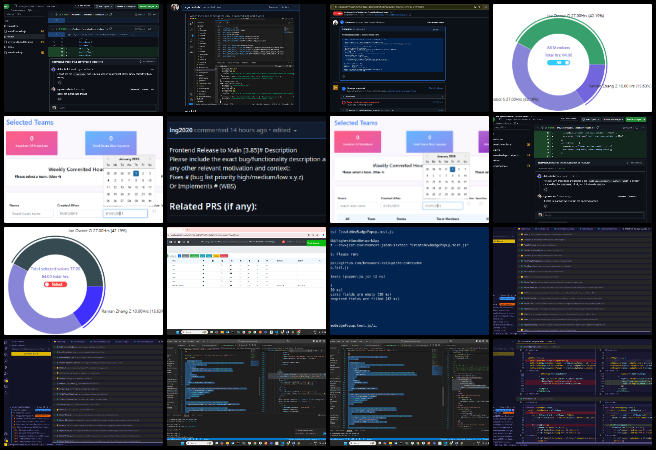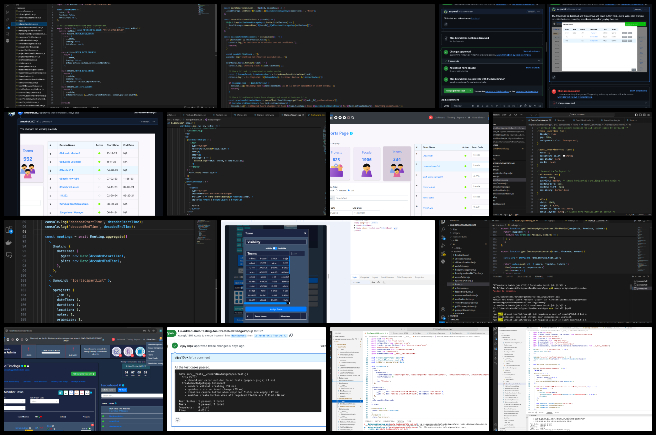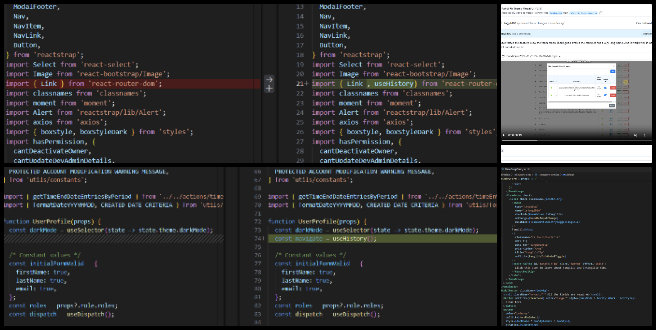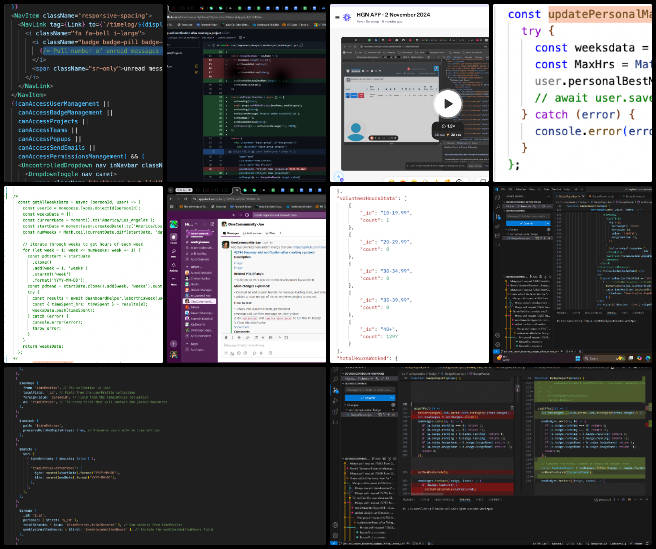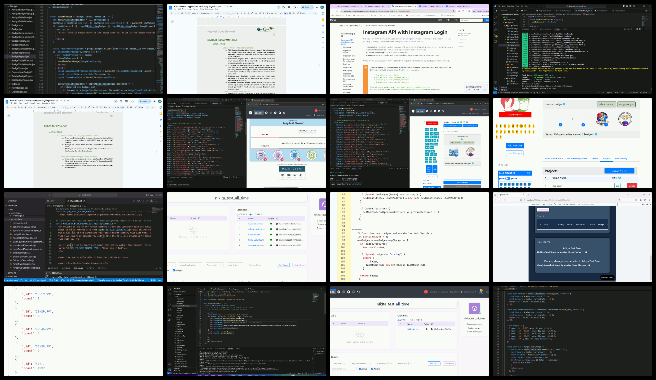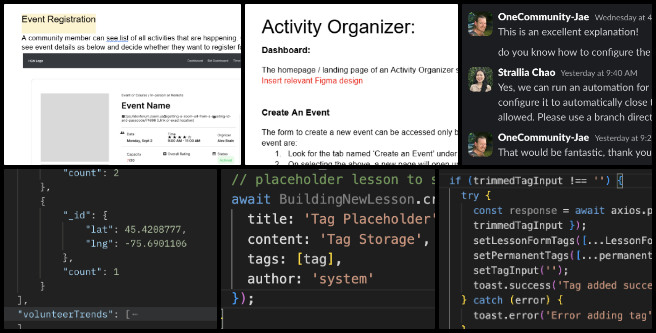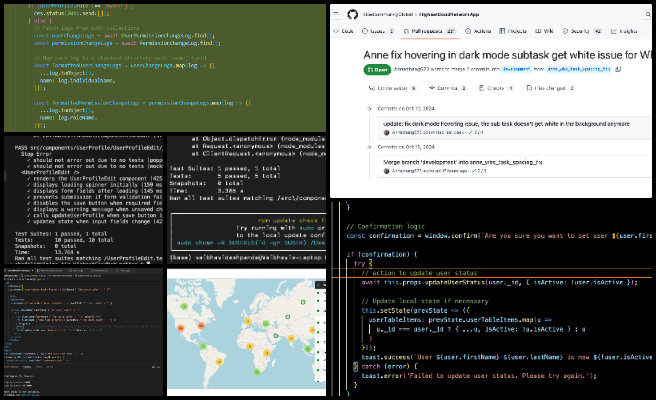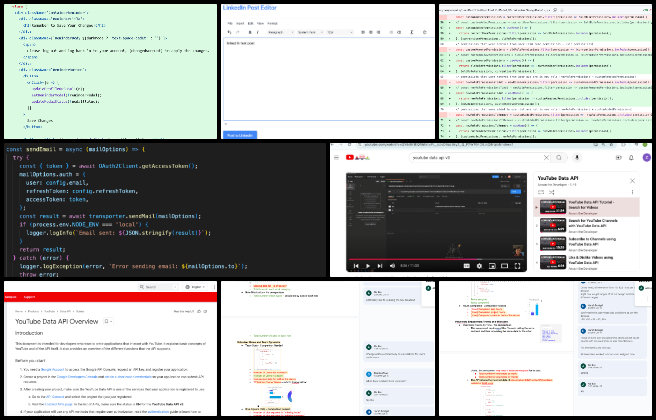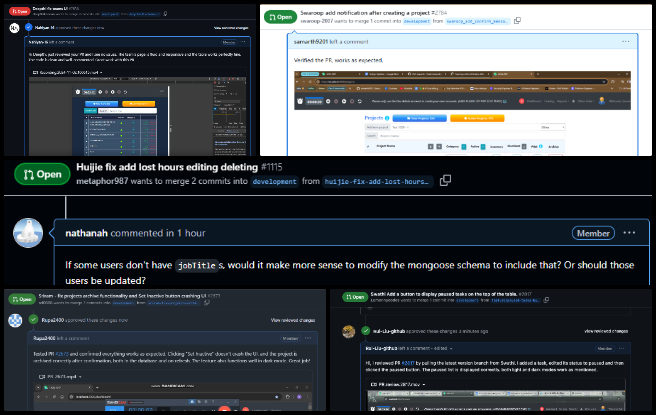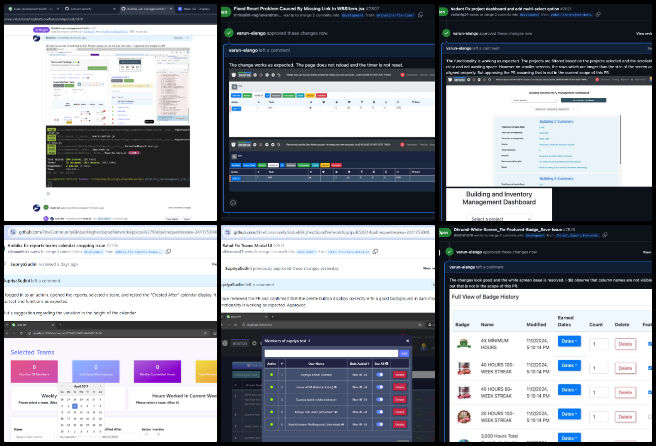Designing Global-Sustainability Systems – One Community Weekly Progress Update #607
At One Community, we are designing global-sustainability systems to regenerate our planet and create a world that works for everyone. Our all-volunteer team is focused on sustainable approaches to food, energy, housing, education, economics, and social architecture. By open sourcing and free sharing the complete process, we aim to build a self-replicating model that inspires a global collaboration of teacher/demonstration hubs, all for “The Highest Good of All.” Together, we are evolving sustainability and fostering global stewardship practices that promote fulfilled living and lasting positive change.
- Here’s our project overview
- Here’s our world-change methodology
- Here’s how this becomes self-replicating
- Here’s how we are open source and free-sharing all the do-it-yourself designs

OUR MAIN OPEN SOURCE HUBS
Click on each icon to be taken to the corresponding Highest Good hub page.
One Community’s physical location will forward this movement as the first of many self-replicating teacher/demonstration communities, villages, and cities to be built around the world. This is the November 4th, 2024 edition (#607) of our weekly progress update detailing our team’s development and accomplishments:
Designing Global-Sustainability Systems
One Community Progress Update #607
DONATE | COLLABORATE | HELP WITH LARGE-SCALE FUNDING
CLICK HERE IF YOU’D LIKE TO RECEIVE AN EMAIL EACH WEEK WHEN WE RELEASE A NEW UPDATE
YOU CAN ALSO JOIN US THROUGH SOCIAL MEDIA
ONE COMMUNITY WEEKLY UPDATE DETAILS
HIGHEST GOOD HOUSING PROGRESS
 One Community is designing global-sustainability systems through Highest Good housing that is artistic and beautiful, more affordable, more space efficient, lasts longer, DIY buildable, and constructed with healthy and sustainable materials:
One Community is designing global-sustainability systems through Highest Good housing that is artistic and beautiful, more affordable, more space efficient, lasts longer, DIY buildable, and constructed with healthy and sustainable materials:
- Learn about: Our Upcoming Crowdfunding Campaign
- Learn about the different village models: 7 Sustainable Village Models
- Visit the open source portals for the first two: Earthbag Village OS Hub | Straw Bale Village OS Hub
This week, Adil Zulfiquar (Engineer) continued working on the Vermiculture Toilet designs. He focused on finalizing the transportation solutions report, incorporating images and detailed explanations of the calculations used. All Excel sheets were converted to collaborative Google Sheets and linked within the report. The table of contents was revised to ensure uniformity and correct sequencing, streamlining the document. Context references were added to the report, along with additional pictures to enhance illustration. The Earthbag Village is the first of 7 to be built as the housing component of One Community’s open source model for designing global-sustainability systems. See below for some of the pictures related to this work.
Akshit Sethi (Architectural Designer) continued working on finalizing the interior of the Earthbag Village 4-dome home design. Akshit completed the base drawing set for the EarthBag Village, updating all layers to improve readability and prepare the drawings for publication. He also began 3D modeling the redesigned ramp curvature, with an emphasis on optimizing access for the service ramp. These updates support both the functionality and clarity of the project documentation. The Earthbag village is the first of 7 villages to be built as part of One Community’s open source model for designing global-sustainability systems. See his work in the collage below.
Anil Karathra (Mechanical Engineer) continued working on the Vermiculture Toilet designs. His research on worm density and population dynamics was completed and documented, with additional research conducted on the compost chamber and initial findings recorded. CAD models were created to address a structural gap in the vermiculture toilet design, and solutions were proposed for the main structure. Documents were updated based on recent feedback, worm density in the eco toilet was reconfirmed, and document formatting was adjusted in line with the latest feedback. The approach for designing global-sustainability systems enables the development of innovative solutions that are both environmentally friendly and effective. See below for some of the pictures related to this work.
Avery Hamilton (Mechanical Designer) continued working on finalizing the interior of the Earthbag Village 4-dome home design. Avery converted plumbing fixture schedules from text box families to Revit schedules to streamline future editing. He conducted preliminary equipment calculations for water heater and exhaust rates, selected fixtures, and scheduled them accordingly. Additionally, Avery researched exhaust system requirements and worked on Revit scheduling and modeling for range hood and mini-split families. The Earthbag village is the first of 7 villages to be built as part of One Community’s open source model for designing global-sustainability systems. See his work in the collage below.
Joseph Osayande (Mechanical Engineer) continued helping finish the Vermiculture Toilet engineering and design details. He focused on revising the Waste Removal Stand (WRS) to resolve dimensional mismatches with the chamber, including modifications to fit a redesigned 46×46 drawer with a thinner structure than originally planned. A U-shaped blocker was introduced to prevent waste leakage from the drawer, and the main unistrut support was adjusted to center on the innermost vertical unistrut. Further adjustments are in progress to ensure the slider aligns with the new drawer dimensions. Additionally, the force analysis approach was updated to test the system’s maximum load capacity in multiple directions. The Earthbag Village is the first of 7 to be built as the housing component of One Community’s open source model for designing global-sustainability systems. See some of his work in the collage below.
Karthik Pillai (Mechanical Engineer) continued helping finish the Vermiculture Toilet engineering and design details and helping with the Earthbag Village 4-dome home roof plan. Karthik focused on the four-dome cluster project, conducting finite element analysis (FEA) for the roof joist and working on the design of columns, the main supporting joist, and supporting rafters. He completed some FEA on this design and shared the results with his team during the weekly meeting, with plans to refine the design and perform further analysis. For the vermiculture project, he addressed gaps within the main structure and adjusted the design based on team feedback, with ongoing iterations until a suitable design is achieved. Additionally, he modified the waste dumping mechanism, though this remains a lower priority than the main structure. The Earthbag Village is the first of 7 to be built as the housing component of One Community’s open source model for designing global-sustainability systems. See some of his work in the collage below.
Michaela Silva (Architect) continued working on finalizing the interior of the Earthbag Village 4-dome home design. Michaela temporarily took on the role of project manager for both the MEP and Structural/Roof 4-dome teams. She coordinated with team members to ensure meetings proceeded as scheduled during her time as acting project manager. Additionally, Michaela advanced work on the code data sheet for the Construction Documents. The Earthbag village is the first of 7 villages to be built as part of One Community’s open source model for designing global-sustainability systems. See her work in the collage below.
Prarthana Jathar (Architectural Designer) focused her work on the Earthbag Village project. Prarthana focused on tasks for the Earthbag Village project, including scaling village layouts in AutoCAD with attention to straw bale elements. She attended a team meeting to discuss column placement and continued scaling and formatting village drawings. She also created standardized PDFs, refined building footprints in AutoCAD, calculated area footprints for the city center, and formatted them for PDF export. The Earthbag Village is the first of 7 to be built as the housing component of One Community’s open source model for designing global-sustainability systems. Take a look at some of this work in the images below.
Yagyansh Maheshwari (Mechanical Engineer) continued helping finish the Vermiculture Toilet engineering and design details. Yagyansh worked on optimizing wheel placement to facilitate indoor movement where applicable. He conducted finite element analysis (FEA) on the drawer to assess its capacity to handle the weight load and the pulling force exerted by the winch, making adjustments to refine the results. Additionally, he prepared FEA reports and revisited analyses on specific parts as needed. The Earthbag Village is the first of 7 to be built as the housing component of One Community’s open source model for designing global-sustainability systems. See some of his work in the collage below.
DUPLICABLE CITY CENTER PROGRESS
 One Community is designing global-sustainability systems through a Duplicable and Sustainable City Center that is LEED Platinum certified/Sustainable, can feed 200 people at a time, provide laundry for over 300 people, is beautiful, spacious, and saves resources, money, and space:
One Community is designing global-sustainability systems through a Duplicable and Sustainable City Center that is LEED Platinum certified/Sustainable, can feed 200 people at a time, provide laundry for over 300 people, is beautiful, spacious, and saves resources, money, and space:
- Learn about this building and it’s function in designing global-sustainability systems: Duplicable City Center Open Source Hub
Arnob Mutsuddi (Mechanical Engineer) continued working on Duplicable City Center structural engineering model and details. His work focused on adjusting the middle ring of Row 2 with the side struts, aligning two struts with the middle ring, and progressing with the alignment of the remaining four struts. Tolerance adjustments were made to ensure a proper fit between the side struts and the middle ring in Row 2. Design work on the Row 2 connector reached 95% completion. A team meeting was held to discuss current progress, and a new design methodology was presented to teammates for potential application in other hub connectors. The Duplicable City Center is a foundational part of One Community’s open-source model, which excels in designing global-sustainability systems. This approach is integral to their mission of designing global-sustainability systems through innovative and scalable solutions. See some of this work in the pictures below.
Chris Blair (GIS Technician/Horticulturist) continued working with GIS data as part of One Community’s Permaculture Design that includes the location of the Duplicable City Center. He continued learning how to use QGIS, an open-source GIS software, with the goal of recreating his previous work from proprietary software to improve future data access. He imported updated blueprints into QGIS and continued scaling and digitizing the villages and community center based on revised area measurements of their footprints. Within One Community’s open-source framework, the Duplicable City Center plays a central role in designing global-sustainability systems. The images below showcase some of this work.
Faeq Abu Alia (Architectural Engineer) continued his work on the Duplicable City Center Eco-kitchen renders. He focused on finalizing the City Center kitchen model in SketchUp by addressing model defects and adding elements such as food and human figures to enhance realism. In Lumion, Faeq further refined the model by adjusting materials, adding human figures, and rendering video shots essential for the walkthrough presentation. The Duplicable City Center represents a fundamental element of One Community’s open-source approach, dedicated to designing global-sustainability systems. View examples of this work in the pictures provided below.
Nika Gavran (Industrial Designer) continued her work on the Duplicable City Center dormer window installation plans. She focused on expanding the final dormer window assembly document, concentrating on the exterior assembly steps. She set up the Keyshot environment to render the final stages, now that the window is fully assembled, and has begun integrating these renders into the final graphic layout. As a foundational component of One Community’s open-source strategy, the Duplicable City Center is designed for designing global-sustainability systems. The images below showcase some of this work.
Sanket Basannavar (Mechanical Engineer) continued his research on the structure and materials used in spa covers currently available in the market. He engaged with several spa cover manufacturing companies to gather insights on practical design and material applications for spa covers. Building on previous concepts, he worked with a three-part configuration consisting of two quarter sections and one half section, aiming to improve usability and durability. Sanket incorporated a sliding mechanism into the design to streamline the opening and closing process, enhancing accessibility and efficiency. This interaction with industry professionals refined design choices and provided valuable perspectives on assembly and material selection. Within One Community’s open-source framework, the Duplicable City Center plays a central role in designing global-sustainability systems. The images below showcase some of this work.
Tasmia Hasan (Design Engineer) continued her work on the structural engineering of the Duplicable City Center. She used the duplicate and free move functions in Autodesk to manually adjust the steel ledges for a more precise fit within the project framework. She collaborated with the team, repeatedly adjusting each ledge to find the correct angle, which involved individually moving each component and fine-tuning its position. As a foundational component of One Community’s open-source strategy, the Duplicable City Center is intended for designing global-sustainability systems. You can see examples of this work in the following images.
Umema Ali (Mechanical Design Engineer) continued working on the Duplicable City Center Engineering. She focused on static structural analysis to evaluate snow loads across multiple load cases, ranging from 1 to 4 N gravity, for both the new and traditional dome structures using Autodesk Inventor. The analysis involved setting up appropriate boundary conditions and defining load parameters specific to each dome configuration. By adjusting these parameters, assessed how each structure responded under varied snow load scenarios, allowing for a comparative evaluation of performance and stability across the two designs. Within One Community’s open-source framework, the Duplicable City Center plays a central role in designing global-sustainability systems. The images below showcase some of this work.
Yancong E (Architectural Designer) continued working on the Duplicable City Center project. He incorporated Jae’s feedback on the tutorial section, adjusting the formatting, including changes to heading font sizes and the addition of subheadings. He also updated the newest floor plans in the AutoCAD file and completed the Outdoor View Range analysis for the first floor, basement, and fourth floor. Additionally, Yancong began the calculations for new Outdoor View accordingly. The Duplicable City Center represents a fundamental element of One Community’s open-source approach, dedicated to designing global-sustainability systems. This innovative initiative aims to showcase how designing global-sustainability systems can transform urban spaces into more sustainable and community-oriented environments. You can see examples of this work in the following images.
Nimika Devi (Architect) enhanced the quality of previous walkthroughs by re-rendering them in high definition, improving visual clarity compared to the initial lower-quality versions. She incorporated additional 3D plants and elements, enriching the overall realism and detail of the renders to create a more immersive experience. Nimika also produced high-quality rendered images showcasing both the exterior and interior of the duplicable city center. These visuals highlight the architectural details, spatial layout, and material finishes, providing a comprehensive view of the design. The renders serve as an effective tool for visualizing the project’s aesthetic and functional elements. As a foundational component of One Community’s open-source strategy, the Duplicable City Center is designed for designing global-sustainability systems. You can see examples of this work in the following images.

HIGHEST GOOD FOOD PROGRESS
 One Community is designing global-sustainability systems through Highest Good food that is more diverse, more nutritious, locally grown and sustainable, and part of our open source botanical garden model to support and share bio-diversity:
One Community is designing global-sustainability systems through Highest Good food that is more diverse, more nutritious, locally grown and sustainable, and part of our open source botanical garden model to support and share bio-diversity:
- Learn about the structures: Hoop House Hub | Aquapini & Walipini Open Source Hub
- See what we’ll be growing and designing global-sustainability systems: Gardens & Hoop Houses | Large-scale Structures | Food Forest | TA
This week, the core team initiated and completed the Highest Good Botanical Tools, Equipment, Materials/Supplies List. They developed an introductory section and outlined eleven key considerations for a successful botanical garden master plan. The list includes all necessary tools, equipment, materials, and supplies, identified with a BG notation. Many of these items were already on the master tools list, while others were newly added. The Highest Good Food initiative is a key component of One Community’s open source plans, dedicated to designing global-sustainability systems. See their work in the collage below.
Jay Nair (BIM Designer) continued working on Aquapini and Walipini Planting and Harvesting lighting and HVAC design. He explored the potential integration of clay and sand thermal batteries with a climate battery system in the greenhouse design. Research revealed that well-insulated clay and sand batteries can significantly reduce winter heating costs by retaining heat more effectively than traditional methods and addressing insulation and heat distribution issues. To enhance the efficiency of this setup, various climate battery components were considered, including heat exchange tubing, intake fans, and climate control systems. Each component’s role was analyzed for its specific function within the system: heat exchange tubing for thermal transfer, intake fans to regulate airflow, and climate controls to automate temperature and humidity adjustments. Key challenges, such as preventing overheating and optimizing soil heating, were identified. This combined approach aims to create a balanced thermal environment tailored to the unique needs of the greenhouse’s plant zones. The Highest Good Food initiative is a key component of One Community’s open source plans, dedicated to designing global-sustainability systems, and exemplifies the organization’s commitment to designing global-sustainability systems through innovative design and implementation. Below are some of the images showcasing this work.
Purva Borkar (Landscape Architect) continued her work on creating an outdoor merge of a food-producing ecosystem and people spaces for the Aquapini and Walipini Planting and Harvesting structures. She gathered a focused collection of precedents on stormwater management strategies such as rain gardens, bioswales, and canal parks, which address runoff and water retention in urban areas. Alongside this, she researched people-centric spaces like community parks, pedestrian pathways, and interactive zones to enhance social engagement. Additionally, her studies included food infrastructure elements, such as urban farms and movable markets, to integrate sustainable food production within city landscapes. Purva has begun conceptual sketching to incorporate these features into her CAD plan, blending stormwater management with community spaces and food production for a multifunctional urban design approach. As part of One Community’s open source efforts, the Highest Good Food initiative embodies a commitment to designing global-sustainability systems. The images below offer a glimpse into these ongoing efforts.
Syahrina Maulida Majid (Volunteer Nutritionist) continued working on creating menu implementation tutorials as a part of One Community’s Transition Food Self-Sufficiency Plan. She worked on the master recipe template, analyzing its structure to better understand its functionality and usability. A separate copy of the template was made to test various input values, observing how adjustments impacted calculations without affecting the original version. During this process, Syahrina identified areas that could benefit from clarification or adjustments to improve the template’s adaptability for different dietary needs and group sizes. She documented questions and specific areas for potential improvement, which can support future updates. Additionally, Syahrina began drafting a basic tutorial, outlining key steps for users to effectively navigate the template, aiming to streamline its usability for end-users. The Highest Good Food initiative plays a crucial role in One Community’s open source plans, with the aim of designing global-sustainability systems. Her work is showcased in the collage below.
Vatsal Tapiawala (Mechanical Engineer) started working on the design of the greenhouse for the Aquapini and Walipini Planting and Harvesting structures. He completed his research on passive greenhouse design, referencing ideas from Paul Wheaton’s video and other sources. He started watching tutorials to expand his knowledge of REVIT and to learn finite element analysis (FEA) techniques for the Aquapini and Walipini structure designs. Vatsal also organized his research findings and prepared specific action items for the next project phase. The Highest Good Food initiative is a key component of One Community’s open source plans, dedicated to designing global-sustainability systems. See his work in the collage below.
Ziyi Chen (Landscape Designer) continued working on the design of the outdoor spaces for the Aquapini and Walipini Planting and Harvesting structures. She continued modeling in SketchUp, selecting appropriate 3D models of the chosen tree species from 3D Warehouse and making adjustments to support construction across multiple levels within the model. She incorporated shrubs, herbs, and ground cover along the roadway through the four-season area, adding sage, lemon balm, dogwood, and wintergreen to enhance the food forest’s ornamental appeal in autumn and winter. The Highest Good Food initiative is a key component of One Community’s open source plans, dedicated to designing global-sustainability systems. See her work in the collage below.
HIGHEST GOOD ENERGY PROGRESS
 One Community is designing global-sustainability systems through Highest Good energy that is more sustainable, resilient, supports self-sufficiency and includes solar, wind, hydro and more:
One Community is designing global-sustainability systems through Highest Good energy that is more sustainable, resilient, supports self-sufficiency and includes solar, wind, hydro and more:
- Learn about the open source sustainable-energy foundations: Solar, Hydro, and Wind
- Explore our research into the most sustainable products and companies for saving water and energy: Insulation, Eco-laundry, Lightbulbs and Light Bulb Companies, Doors and Door Companies, Windows and Window Companies, Toilets, Faucets and Faucet Accessories, Urinals, and more.
This week, Panambur Rachan Rao (Project Manager) revised the Highest Good Energy Spreadsheet based on feedback. He determined that there isn’t much to add to the Solar, Wind, or Hydro sections, apart from a layout for the grid structure needed to power the villages. Rachan also collaborated with the DCC team and noted their progress on their action items. Within One Community’s open-source framework, the Duplicable City Center plays a central role in designing global-sustainability systems. Take a look at some of this work in the images below.
Viktoriia Zakharova (Administrative Assistant) completed research on sustainable light bulb companies and products for the Duplicable City Center and submitted it for review. She revised the webpage to improve grammar, logical flow, and structure, updating and rearranging the lightbulb specifications for readability and replacing missing products, specifications, and companies where needed. She created a research plan and compiled a table of currently selected fixture options. Additionally, Viktoriia conducted a hiring interview and provided feedback on a volunteer candidate. The Duplicable City Center represents a fundamental element of One Community’s open-source approach, dedicated to designing global-sustainability systems. View examples of this work in the pictures provided below.
Yi-Ju Lien (Environmental Engineer) finalized the additional content and revisions for the Hydropower Energy manual, which will be used by the web management team for updates. She worked in stormwater management for the Earthbag Village by reviewing the existing design and calculations, as well as checking state regulations to determine whether the current performance in stormwater management aligns with those regulations and meets LEED criteria. The Duplicable City Center represents a fundamental element of One Community’s open-source approach, which is dedicated to designing global-sustainability systems. Below is a collage of this work.
HIGHEST GOOD EDUCATION PROGRESS
 One Community is designing global-sustainability systems through Highest Good education that is for all ages, applicable in any environment, adaptable to individual needs, far exceeds traditional education standards, and more fun for both the teachers and the students. This component of One Community is about 95% complete with only the Open Source School Licensing and Ultimate Classroom construction and assembly details remaining to be finished. We’ll report on the final two elements to be finished as we develop them. With over 8 years of work invested in the process, the sections below are all complete until we move onto the property and continue the development and open sourcing process with teachers and students – a development process that is built directly into the structure of the education program and everything else we’re creating too:
One Community is designing global-sustainability systems through Highest Good education that is for all ages, applicable in any environment, adaptable to individual needs, far exceeds traditional education standards, and more fun for both the teachers and the students. This component of One Community is about 95% complete with only the Open Source School Licensing and Ultimate Classroom construction and assembly details remaining to be finished. We’ll report on the final two elements to be finished as we develop them. With over 8 years of work invested in the process, the sections below are all complete until we move onto the property and continue the development and open sourcing process with teachers and students – a development process that is built directly into the structure of the education program and everything else we’re creating too:
- Program Overview: Education Open Source Hub
- How the components work together in designing global-sustainability systems: How to use the Education for Life Program
- Lesson Plans for Life – Lesson Plans How-to
- Foundations of Outstanding Leaders, Teachers, and Communicators
- Curriculum for Life
- Teaching Strategies for Life
- Learning Tools and Toys for Life
- Evaluation and Evolution
This week, Brian Mwoyowatidi (Graduate Structural Engineer) continued helping with the engineering details for the Ultimate Classroom part of the Highest Good education component. He achieved approximately 80% completion of the final draft for the Ultimate Classroom Footer, Foundation, and Flooring Tutorial and Engineering Report. He integrated the load assumptions applied in the design and linked a calculation and design report completed in STAAD Pro. In the Wind Load Analysis section, he added key details on the basic wind speed used, the wind exposure category, and the process for determining the internal pressure coefficient. Brian also contributed video links to be used as the project moves on-site, providing helpful resources for those interested in replicating the project. The One Community model of combining forward-thinking education with sustainably built classrooms like this is an excellent example of designing global-sustainability systems. This approach exemplifies designing global-sustainability systems by creating environments fostering collaboration and innovation. See the collage below for his work.
HIGHEST GOOD SOCIETY PROGRESS
 One Community is designing global-sustainability systems through a Highest Good society approach to living that is founded on fulfilled living, the study of meeting human needs, Community, and making a difference in the world:
One Community is designing global-sustainability systems through a Highest Good society approach to living that is founded on fulfilled living, the study of meeting human needs, Community, and making a difference in the world:
- Read the Highest Good society overview: Highest Good Society
- Learn about the model for fulfilled living and sharing and designing global-sustainability systems: A Day in the Life
- Learn about the 4 economic models: RBE | For-profit | Non-profit | Entrepreneurship
- Learn about our open source community collaboration and management software: The Highest Good Network
This week, the core team completed over 68 hours managing One Community’s volunteer-work review not included above, emails, social media accounts, web development, new bug identification and bug-fix integration for the Highest Good Network software, and interviewing and getting set up new volunteer team members. They also shot and incorporated the video above that talks about designing global-sustainability systems and how designing global-sustainability systems is a foundation of the bigger picture of everything One Community is doing. The image below shows some of this work.
Anoushka Hazari (Data Analyst) reviewed Nb Chart videos to explore their use for enhancing dashboard visualizations. After identifying a chart plugin for visualizing specific data columns from the PR review sheet, she integrated charts to display key PR activity metrics alongside the table-based dashboard. She began creating columns and mapping rows from the data sheet to categorize information like status, name, and PR reviews, setting up a Figma target to enable automatic mapping. This process prompted further research into time-saving methods for mapping and reducing repetitive tasks. While researching, Anoushka missed logging time in the HGN app. She completed PR reviews for her team, provided feedback on summary formatting, and created a collage of team images. As WordPress access remains unavailable, Anoushka continues enhancing the dashboard in the meantime. This work helps One Community’s mission of designing global-sustainability systems and reinforces our commitment to designing global-sustainability systems. The following images show his work for the week.
Aravind Yuvraj (Networks and Security Engineer) focused on addressing and stabilizing a site that experienced multiple crashes. Initially, efforts were directed toward collaborating with Bluehost and working within WordPress to restore site functionality. Despite these efforts, the database continued to encounter issues, preventing it from loading properly. Further work included attempting restoration with Bluehost’s support to re-establish normal operations along with Newell. In parallel, the site was monitored for stability, with ongoing checks for any signs of instability. Additionally, tasks on Azure included backing up files via a link provided by team member Namra and coordinating with colleague Jaya to complete a pre-defined task list. This work helps One Community’s mission of designing global-sustainability systems and reinforces our commitment to designing global-sustainability systems. The following images show his work for the week.
Deepthi Arcot Subramanyam (Data Analyst) focused on prioritizing key performance indicators (KPIs) and explaining web analytics concepts to the team. In Riddhisha’s absence, she led the team meeting, covering key topics including team responsibilities, access challenges, strategies for dashboard development, and identifying URLs to be tracked. Deepthi coordinated with Riddhisha to align the meeting agenda and ensure clear planning. Additionally, she contributed to creating a summary, collages, folder organization, and a blog for the Skye team. This work helps One Community’s mission of designing global-sustainability systems and reinforces our commitment to designing global-sustainability systems. The following images show her work for the week.
Feras Rehman (Data Analyst) continued working on developing One Community’s Mastodon account and strategy. He also managed his part of the One Community Updates Blog and reviewed the work of Rahul providing feedback on identified errors. Five additional posts for Mastodon were scheduled on Buffer for the following week, leading to a threefold increase in post reach through optimized hashtag selection and refined post structuring. The weekly summary was completed, and images were added to supplement the content. This work helps One Community’s mission of designing global-sustainability systems and reinforces our commitment to designing global-sustainability systems. The following images show his work for the week.
Gavin Burke (Project Manager) continued to lead the tech team in addressing website issues. He held a team meeting to discuss the potential need to move the website to a different host. After adding Newell, who has extensive experience in database optimization, to the team, the website’s stability improved, and switching hosts no longer appeared necessary. Gavin also spent several hours researching companies specializing in sustainable contracting to learn more about their processes. This work helps One Community’s mission of designing global-sustainability systems and reinforces our commitment to designing global-sustainability systems. The following images show his work for the week.
Hritvik Mahajan (Data Analyst) Hritvik contributed to the Highest Good Food Team blog, creating collages in Fotojet and providing feedback on teammates’ documents. After discovering that work completed on Sunday had not been saved, he repeated the webpage updates. He tested multiple pull requests on the development site, addressing merge issues and coordinating with team members on Slack to ensure necessary adjustments. He also created Loom videos to document testing feedback. Hritvik prepared and shared the weekly blog and managed Twitter community posts, leveraging the website’s current functionality. Additionally, he refined the social media scheduler in Figma, implementing adjustments and posting updates across Twitter communities. This work helps One Community’s mission of designing global-sustainability systems and reinforces our commitment to designing global-sustainability systems. The following images show his work for the week.
Rahul Bavanandan (Data Analyst) continued his work on several ongoing projects. He spent time expanding his Reddit presence by engaging in conversations across various subreddits to build community standing and pave the way for sharing original content related to One Community. Rahul made progress on the HGN Phase 2 Evolution project, focusing on translating Figma designs for Phases 1 and 3 into actionable data requirements for the Phase 2 dashboard. He also curated content for the weekly progress update, which involved adding weekly summaries and photo collages to the webpage, ensuring all information was accurately presented. This work supports One Community’s mission and reinforces our commitment to designing global-sustainability systems. The images below showcase his work for the week.
Shireen Kayal (Humanitarian Program Developer & Data Manager) focused on refining the plans in Illustrator, ensuring they align with the overall vision. She readjusted a misaligned slide and improved the transitions of the four slides featuring the city center plans, adding the One Community logo for clarity. She also enhanced the soundtrack, replacing low-quality images with high-quality visuals and restoring the 4Dome house video. Additionally, Shireen fine-tuned animations to match the music more effectively, arranged the plans to create a seamless visual experience, and updated the images of the atrium to offer a clearer perspective. This work supports One Community’s mission and reinforces our commitment to designing global-sustainability systems. The images below showcase her work for the week.
Shrinivas Patil (Software Engineer) completed work on his blog 606 and provided feedback for each member of Team MoonFall. He reviewed the work of two other admins, giving feedback on their summaries, images, and video submissions. Additionally, he tested several PRs in the development environment and shared feedback with the developer team. He updated the Highest Good Network PR review tracking sheet to capture all urgent and high-priority tasks and incorporated suggestions from Jae on previous work. He also followed up with team members on Slack who are actively working on relevant PRs. This work supports One Community’s mission and reinforces our commitment to designing global-sustainability systems. The images below showcase his work for the week.
Vatsal Mendpara (Security Analyst) worked on restoring a corrupted database for a website that was down, which required continuous calls with the Bluehost team to troubleshoot the issue. He also researched alternative hosting platforms, reaching out to customer service and sales teams of a potential provider to gather information for a pros and cons report. Vatsal collaborated with Aravind and Newell to address the website downtime and finalized a report on Hostinger configuration, which involved contacting their staff to obtain details about website specifications and available configurations. This work supports One Community’s mission and reinforces our commitment to designing global-sustainability systems. The images below showcase his work for the week.
Venkata Jaya Pavan Naru (Volunteer Network And Cybersecurity Engineer) implemented Bluehost’s suggestions by pausing SQL and optimizing the wp_posts database from 3GB to 300MB for the first time in 14 years. He filtered and cleared logs, verified Cloudflare’s WAF settings, and edited the .htaccess file to block bot traffic. He also collaborated with the SQL admin to resolve WordPress issues, which improved site performance. Additionally, Venkata discussed transitioning to a new hosting provider, restored the site, and researched alternatives like Hostverge, SiteGround, and Hostinger, with the latter two deemed more reliable. This work supports One Community’s mission and reinforces our commitment to designing global-sustainability systems. The images below showcase his work for the week.
Yash Shah (Data Analyst and Team Administrator) created a blog for Dev Dynasty, organized the folder structure for the week, and provided feedback on various sections. He implemented changes to the document structure and met with Shreya to discuss the User Stories. Following Jae’s instructions, he completed the final draft. Yash also worked on refining the Event Trend and Active Participants sections, structured the event page body frame, and organized the Feedback section. Additionally, he arranged the completed sections with Shreya to enhance the clarity of the Figma design. This work supports One Community’s mission and reinforces our commitment to designing global-sustainability systems. The images below showcase his work for the week
ADMINISTRATION TEAM A-O
The Administration Team’s summary, covering their work administrating and managing most of One Community’s ongoing process for designing global-sustainability systems was managed by Muhammad Huzaifah (Administrative Assistant) and includes Akilan Kumaran (Data Analyst), Durgeshwari Naikwade (Data Analyst), Jessica Fairbanks (Administrative Assistant), Michael Juma (Administrative Assistant), Kishan Sivakumar (Administrative Assistant and Software Team Manager), Jibin Joby (Data Analyst), Vishnu Murali (Data Analyst), Namra Patel (Volunteer Data Analyst), and Olawunmi “Ola” Ijisesan (Administrative and Management Support). This week, Akilan followed up on the weekly summary, tested bugs in the development environment to ensure proper functionality, and coordinated with his team for Slack access to facilitate collaboration on Google Analytics and Google AdWords for the One Community site. Namra focused on website maintenance and administrative tasks to support site performance and prepare for migration, including updating blog pages, recovering lost work on Blog 606 due to an outage, and documenting tasks. She researched hosting providers, such as Hostinger and Host Verge, evaluated their services, and met with Gavin to discuss migration progress. Namra also created a weekly summary report detailing team contributions and organized image submissions and folders to support designing global-sustainability systems. Durgeshwari created LinkedIn social media posts, coordinated interview scheduling as part of the hiring team, conducted analytics-related research for strategic development, and contributed to the Binary Brigade for the Weekly Progress Update #606. Jessica collaborated with Syahrina on menu implementation tutorials, reviewed their progress, and planned next steps. She continued integrating Highest Good Food into small-scale organizations, particularly in schools, formatted informational articles for a resource list, and completed administrative tasks, including creating a collage and updating her page. Jibin reviewed his team’s work, provided feedback, developed his knowledge in Google Analytics through training videos, and explored strategies to improve project performance by identifying key metrics. Kishan handled senior admin duties, reviewed volunteer documents for progress and comments, addressed requests, and completed SEO page checks and edits. He also revisited optimized pages based on peer feedback, took over the weekly blog for another admin, and began new admin tasks. Michael reviewed meeting notes and strategies from the Google AdWords team, revisited the concept document on Google AdWords and Analytics, and conducted extensive online research on Google AdWords, including account creation, keyword planning, and maximizing pay-per-click. Additionally, the team is committed to designing global-sustainability systems that enhance their impact in local communities. Ola addressed PR review work, responded to comments, and outlined next steps for the PR review team, ensuring manager oversight compliance. She scheduled Pinterest appointments and resized images for upload. Vishnu prepared available metrics for reporting within the Google Analytics team, explored using GA4 for SEO optimization through instructional videos, participated in a meeting to clarify task divisions, and discussed metrics for effective reporting and tracking enhancements. He also reviewed weekly summaries for accurate blog updates. One Community’s model for designing global-sustainability systems includes developing and maintaining a supportive administration team like this. You can see the work for the team in the image below, showcasing our commitment to designing global-sustainability systems.
ADMINISTRATION TEAM R-Z
The Administration Team’s summary, covering their work administrating and managing most of One Community’s ongoing process for designing global-sustainability systems was managed by Sneka Vetriappan (Data Analyst) and includes Rachna Malav (Data Analyst), Ratna Meena Shivakumar (Data Analyst and Admin), Saumit Chinchkhandi (Administrative Assistant and Software Engineer), T R Samarth Urs (Data Analyst), and Zuqi Li (Administrative Assistant and Economic Analyst). This week, Rachna interviewed two candidates and documented meeting notes in the hiring spreadsheet, handled emails, and worked on SEO pages and assignments. Ratna prepared the weekly summary, created blog collages, and worked on SEO, including formatting and optimizing One Community’s Avatar Page. She also scheduled social media posts and reviewed around 130 blogs up to Blog #375 for the AI Music tasks. Saumit performed frontend testing on numerous pull requests, coordinated with developers to resolve conflicts, managed PR reviews for volunteers, and updated his WordPress page with a summary and collage. Sneka reviewed and verified time logs, responded to team comments, completed SEO page adjustments, and posted weekly summaries and collages. Samarth led a PR review team, evaluated their work quality, and provided feedback, submitting a blog post with a collage. Zuqi organized the Graphic Design Team’s weekly summary, fixed Rachna’s optimized blogs, reviewed documents for Google AdWords and Analytics, and researched metrics to enhance blog performance and SEO. One Community’s model for developing designing global-sustainability systems includes developing and maintaining a supportive administration team like this. You can see the work for the team in the image below, showcasing our commitment to designing global-sustainability systems.
GRAPHIC DESIGN TEAM
The Graphic Design Team’s summary was managed by Zuqi Li (Administrative Assistant and Economic Analyst) and included Anusha Tariq (Graphic Designer), Aurora Juang (Graphic Designer), Junyuan Liu (Graphic Designer, UI/UX Designer), Jaime Yao (Creative Technologist) and Pranali Desai (Communication Designer), covering their work on graphic designs for designing global-sustainability systems. This week, Anusha identified and corrected errors in previous work, including redoing a deleted section intended for upload and ensuring accurate SEO integration across the website. She created two additional announcement images, gathered data, and developed bio images according to specified guidelines, editing one to feature a nature background to meet visual requirements. Aurora compiled resources from the Brand Build lines book and prototyped the format in Figma. She captured snapshots of actual brand applications, reviewed each, and incorporated them into the book, which now includes four sections. Two sections—brand application and brand governance—along with the contacts page, remain to be updated. Jaime created announcement images and web pages for Anil, Arnob, and Tasmia, and redesigned social media images from previous weeks, correcting issues to meet desired standards. This involved refining design elements, addressing errors, and enhancing visuals for improved engagement on digital platforms, all while designing global-sustainability systems to ensure a cohesive brand message. Junyuan modified elements of Deliverable 1 in HGN Phase 1, including updates to the feedback section on the event page and revising documentation examples. He continued work on the social media image project, finalizing two images and researching ideas for the next. Pranali completed the “Best Small and Large-scale Community Recycle Options” and “Most Sustainable Options” graphic sets, formatted resources with links, and compiled them into PDF pages. She optimized graphic elements and layouts to align with background images and text length, making adjustments to opacity, layout, character spacing, and line spacing. See the Highest Good Society pages for more on how this contributes to designing global-sustainability systems. See the collage below to view some of their work.

HIGHEST GOOD NETWORK PROGRESS
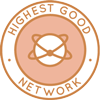 One Community is designing global-sustainability systems through open source Highest Good Network® software that is a web-based application for collaboration, time tracking, and objective data collection. The purpose of the Highest Good Network is to provide software for internal operations and external cooperation. It is being designed for global use in support of the different countries and communities replicating the One Community sustainable village models and related components.
One Community is designing global-sustainability systems through open source Highest Good Network® software that is a web-based application for collaboration, time tracking, and objective data collection. The purpose of the Highest Good Network is to provide software for internal operations and external cooperation. It is being designed for global use in support of the different countries and communities replicating the One Community sustainable village models and related components.
- Learn about our open source community collaboration and management software: The Highest Good Network
This week, the core team continued their work on the Highest Good Network PRs testing, confirming the fixed PRs and resolving several issues. The fixed issues included email notifications to managers, admins, and owners when a team member is deactivated (PR 1126), the TeamLoc search function (PR 2746), and the issue of assigning badges without user selection (PR 2657). They also verified fixes for the timer layout adjustment in the navigator upon accessing “Reports” (PR 2820), corrected inaccuracy in displayed hours that showed an exclamation mark in status (PR 2535) and resolved an issue where some accounts had a one-day start date inaccuracy (PR 2798). Additionally, the team confirmed improvements in Total Team Report loading time (PR 2780), the functionality for opening Teams in new tabs from the Reports section (PR 2589), Project Report member formatting (FE #2782), and the display of total Project, People, and Team reports (PR 2724). The core team also reviewed UI adjustments for the WBS table’s task name column (PR 2679). Other tasks included logging four hours for CoreTeam TesterAgain to test hour accumulation beyond five blue squares and creating records for issues with displaying the correct deactivation date on the Profile page and for the User Management page not reflecting updated account statuses accurately. We continue to focus on designing global-sustainability systems through iterative improvements and user-centric solutions. See the Highest Good Society and Highest Good Network pages for more on how this relates to designing global-sustainability systems. The collage below shows some of their work.
ALPHA SOFTWARE DEVELOPMENT TEAM
The Alpha Team’s summary, covering their work on the Highest Good Network software software was managed by Lin Khant Htel (Frontend Software Developer) and includes Anand Seshadri (Software Engineer), Carlos Gomez (Full-Stack Software Developer), and Nanguan Lin (Software Developer). The Highest Good Network software is how we will manage and measure our processes for designing global-sustainability systems across our social architecture, construction, production, and maintenance processes. This week, Lin reviewed and approved PR #2822, becoming more familiar with the codebase and running tests on his local machine, with all test cases passing. He also reviewed the weekly summaries, photos, and videos submitted by his Alpha team members. Carlos continued work on Jae’s request to enhance the team hours display report page, completing a feature that enables admin users to toggle between viewing values for all members or selected members along with their cumulative values. He also improved the UI by centering the toggle button and values around the pie chart. Concurrently, Carlos addressed feedback and resolved conflicts in FPR #2772 and BPR #1128. As part of his ongoing efforts in designing global-sustainability systems, he ensured that the new features promote better resource management and transparency. Nanguan Lin worked on resolving linting issues and completed the badge component, submitting a pull request on GitHub. He progressed on the reports section, reaching 80% completion, while identifying complex areas needing code refactoring. He also prepared his weekly summary, screenshots, and a screen recording. Anand worked on writing additional test cases for functions in the UserProfile.js component. First, he created a test to verify that the Time Zone, Location, and Badges fields display the correct initial values based on the Redux state. This involved rendering the component with mock initial values for timeZone, location, and badges, asserting that these fields show accurate values, and simulating a click on the Select Featured button to ensure the badge selection modal opens. This confirmed both correct rendering of user profile details and functionality of the badge selection modal. All the team members are committed to enhancing their code quality while designing global-sustainability systems through thoughtful software architecture and testing practices.Next, Anand developed a Privacy Toggle test for the Email and Phone Number fields to confirm that toggling these privacy settings updates the Redux store as expected. This test involved initializing privacy settings in the store, simulating clicks on the privacy toggles, and asserting that the correct actions are dispatched with the updated privacy values. In addition to these test cases, Anand reviewed several PRs, including PR 2817, where he tested a new button to display paused tasks at the top of the table. He verified that tasks added and edited in both owner and volunteer accounts appeared in the filtered list as expected, including in dark mode. Lastly, he reviewed PR Ambika, which addressed the issue of the teams calendar cropping in reports, confirming that the calendar displays correctly, including in dark mode. See the Highest Good Society and Highest Good Network pages for more on how this relates to designing global-sustainability systems. View some of the team’s work in the collage below.
BINARY BRIGADE SOFTWARE DEVELOPMENT TEAM
The Binary Brigade Team’s summary overseeing advancements in the Highest Good Network software was managed by Vijay Anand Pandian (Full Stack Software Engineer) and includes Aaryaneil Nimbalkar (Software Developer), Aditya Sure (Software Engineer), Anirudh Sampath Kumar (Software Developer), Ashay Kalpesh Mehta (Software Engineer), Ashmita Pandey (Software Engineer), Deepthi Kannan (Software Engineer), Huijie Liu (Software Engineer), Sai Venkatesh Voruganti (Volunteer Software Engineer), Sandhya Adavikolanu (Software Developer), Sriram Seelamneni (Software Engineer), Xiaolu Li (Software Engineer) and Ziyu Chu (Volunteer Software Engineer). The Highest Good Network software is how we’ll be managing and objectively measuring our process for designing global-sustainability systems through our social architecture, construction, production, and maintenance processes.
Aaryaneil reviewed and tested multiple pull requests, focusing on updates across project components. His reviews included UI adjustments to the Teams Modal (PR #2831), disabling badge assignment (PR #2830), correcting tab preview names (PR #2829), modifying material approval (PR #2827), and fixing a white screen issue on badge save (PR #2825). Testing covered unit tests for features like the PeopleTasksPieChart (PR #2824), CreateNewBadgePopup (PR #2822), and the QuickSetupModal (PR #2832). Additional efforts addressed dashboard issues, such as multi-select options (PR #2821), a white screen on task deletion (PR #2818), and start date and reset bugs (PRs #2812, #2807), along with user ID corrections and team report adjustments for small screens (PR #2801, PRs #2790, #2796). His work is pivotal in designing global-sustainability systems that enhance the efficiency and effectiveness of these components. Aditya focused on adding the missing “Status” column header in the Team Member Tasks tab within the HGN Software Development project. The task involved identifying the issue, making the necessary changes, and preparing the feature for review. The work was completed, and a pull request was prepared for integration. Anirudh focused on reviewing and testing 10 pull requests. He examined PR #2806, which involved managing team additions or deletions without saving, ensuring it functioned correctly. PR #2802 was reviewed for its adjustments to table widths for improved responsiveness across devices. In PR #2789, he analyzed the changes made for specific functionality enhancements. He tested PR #2825, which addressed a white screen issue that arose during the process of saving a featured badge. Additionally, this work contributes to the overarching goal of designing global-sustainability systems, emphasizing the importance of developing software solutions that promote environmental responsibility and efficiency. For PR #2822, he went through unit testing on the CreateNewBadgePopup component, assessing its usability and performance. PR #2824 involved unit testing for the PeopleTasksPieChart component to verify its accuracy and functionality. Anirudh also investigated PR #2823, which was focused on resolving page freeze issues linked to clicking the active button. He reviewed updates in PR #2831 regarding the Teams Modal UI to ensure a seamless user experience. Additionally, he tested PR #2821, which introduced a multi-select option on the project dashboard for enhanced user interaction, and PR #2829, which involved correcting tab preview names for better navigation clarity. In his work, Anirudh is passionate about designing global-sustainability systems that enhance user engagement while addressing pressing environmental challenges. Ashay worked on resolving the issue related to the “Delete Featured Badge” not functioning properly on user profiles when the screen width is below 1000px. He focused on identifying the root cause of the display and interaction issues and explored solutions involving CSS adjustments and React component modifications. He reviewed the impact of these changes on the overall user interface to maintain consistency. A video demonstrating the current progress and results of these modifications was uploaded to Dropbox for review.
Ashish worked on a bug in the report section that involved displaying active teams and filling the team code with the most frequently used code. Much of the initial development had been handled by another developer, but there were a few outstanding issues and a missing functionality. Ashish addressed these issues, completed the missing functionality, tested the changes, pushed the code to GitHub, and raised PR 1140 in the backend repository. Ashmita concentrated on enhancing the code quality within the src/reducers/ directory of the HighestGoodNetworkApp. Utilizing ESLint and other automated code formatting tools, she fixed numerous linting errors and improved the maintainability and consistency of the reducer files across the codebase, ultimately contributing to designing global-sustainability systems. Deepthi created a new PR updating `teamsoverview.css` to improve responsive table layouts with revised media queries, adjust overflow handling to prevent horizontal scrolling, and standardize card and button styling for a consistent interface across various page sizes. She also worked on existing PRs by addressing review comments and continued efforts to resolve issues on the weekly summary page. In her design approach, Deepthi emphasized the importance of designing global-sustainability systems, ensuring that the interface is both user-friendly and environmentally conscious. Huijie continued working on the bell notification for the meeting scheduling feature. She improved the previously implemented logic by opting to store only meeting information in the meeting schema and converting the meeting data into notification forms, which are then loaded into the notification state in the Redux store on the frontend, thereby preventing the duplication of data. Additionally, she addressed minor issues related to time formatting for this feature. Sai tested the Profile Team Code feature for compatibility on screens below 778px, confirming it functions correctly without further changes; the issue has been marked resolved in the bug tracker. He also prepared to begin optimizing the app for five major browsers beyond Chrome, with plans to address each sequentially. Additionally, Sai reviewed weekly summaries for four volunteers, all while designing global-sustainability systems to enhance the app’s overall impact.
Sandhya advanced the HGN Software Development project by enhancing data visualization and backend integration for volunteer statistics. She developed a Task Completed Bar Chart component using React and Recharts, providing a responsive tool for tracking task trends, complete with error-handling for varied API responses. Sandhya also built the TotalOrgSummary dashboard to display metrics like volunteer hours and task completions, supporting data retrieval through Redux actions and adding features for PDF export and sharing. On the backend, she updated APIs and implemented an aggregation pipeline to improve data accuracy for various time frames. Additionally, she applied dark mode styling and added a permissions utility for secure data access, preparing these components for a final testing phase focused on accuracy and responsiveness. Her work contributes to designing global-sustainability systems by effectively utilizing volunteer data for impactful decision-making. Sriram focused primarily on addressing the bug related to “fixing view of others’ dashboards”. He worked on modifying the header and dashboard components to ensure they correctly update when switching between viewing mode and logged-in mode, spending considerable time on error resolution and implementing the required logic. Additionally, he completed a pull request review. Throughout multiple sessions, he continued refining the logic and fixing errors associated with the dashboard view implementation. His contributions reflect a strong commitment to designing global-sustainability systems, ensuring the software supports environmentally conscious practices. Vijay reviewed multiple pull requests for the HGN Software Development project, focusing on enhancements, UI fixes, and testing. He reviewed updates to the QuickSetupModal for dynamic permissions (PR #2832), and fixes for Teams Modal overflow issues with long usernames and delete button inconsistencies in dark mode (PR #2831). Vijay also assessed unit tests for pie chart rendering (PR #2824) and resolved merge conflicts on screen-size adaptability for the reports page (PR #2473) and dashboard components for screens under 767px (PR #2684). Additionally, he reviewed fixes for a freeze issue on the reports page (PR #2823), multi-select options on the project dashboard (PR #2821), and unit tests for the CreateNewBadgePopup component (PR #2822). In addition to his technical contributions, he is passionate about designing global-sustainability systems, integrating eco-friendly practices into software development. Xiaolu continued writing unit tests for the BlueSquaresTable/BlueSquareTable.jsx component, completing tests for about half of its functionality. Xiaolu focused on verifying conditions related to the editable toggle and ensuring correct display of private messages. Additionally, Xiaolu uploaded screenshots of the code and a weekly summary video to the designated Dropbox folders, labeled Week 7 and Week 7 Summary Video, for review. Ziyu began working on unit testing tasks. She selected the task of writing unit tests for a component, QuickSetupModal/QuickSetupModal.jsx, and created four test cases with mock data to evaluate the component’s functionality. All four tests passed on her local machine. Following this, Ziyu submitted a pull request and is now ready for code review and to take on another task for next week. See the Highest Good Society and Highest Good Network pages for more on how this relates to designing global-sustainability systems. View some of the team’s work in the collage below.
BLUE STEEL SOFTWARE DEVELOPMENT TEAM
The Blue Steel Team’s summary, presenting their work on the Highest Good Network software was managed by Jingyi Jia (Software Engineer, Team Manager), and includes Ramakrishna Aruva (Software Engineer). The Highest Good Network software is how we’ll be managing and objectively measuring our process for designing global-sustainability systems through our social architecture, construction, production, and maintenance processes. This week, Ramakrishna identified a new bug/feature to address after the previous issue was resolved in a separate pull request. He began working on the report icon feature for the user profile, he initiated methods to efficiently retrieve specific user IDs to streamline navigation and implemented a method to facilitate direct navigation from the user profile to the reports section. Jingyi reviewed eight pull requests and started work on a new feature. She also began developing a new feature aimed at integrating a reminder/confirmation modal related to time logging. See the Highest Good Society and the Highest Good Network pages to learn more on how their work contributes to designing global-sustainability systems. See below to view images of their work.
CODE CRAFTERS SOFTWARE DEVELOPMENT TEAM
The Code Crafters Team summary, covering their work on the Highest Good Network software, was managed by Akilan Kumaran (Software Engineer) and includes Dhrumil Dhimantkumar Shah (Software Engineer), Pavan Swaroop Lebakula (Software Engineer), Summit Kaushal (Backend Software Developer), Swaroop Udgaonkar (Software Engineer), Muzammil Moahmmed (Software Engineer) and Denish Kalariya (Software Engineer). This week, Swaroop focused on improving layouts for smaller screens, exploring alternative configurations and resolving merge conflicts by updating from the development branch, addressing code issues, and installing dependencies to support an ongoing pull request. He also reviewed his team’s weekly summaries, images, and videos and followed up on the team channel. In addition, he contributed to designing global-sustainability systems by ensuring that the user interface remains accessible and responsive on various devices. Dhrumil addressed an issue in the badge assignment functionality, ensuring badge assignment remains enabled during search and completed a pull request for issue 124, which disables the “Export Featured” button when no badges are marked as featured, after consulting management to clarify documentation. Pavan reported a bug where the bell icon and timelog directed to the same page with different routing paths, seeking guidance from Jae on the bell icon’s purpose, and began testing a task edit format issue observed by Hrithik. Muzammil worked on issue 104, addressing a category inconsistency in the “create project” feature under the Profile > Projects tab, reviewed past pull requests to trace the root cause, and is close to submitting a fix. Summit completed and shared a report on action items with Jae, addressed issues related to Dhrumil’s tasks, verified one item as on track, identified and clarified a discrepancy in a PR description, and updated the earnedDate field format from ‘MM-DD-YYYY’ to ‘MMM-DD-YY’ for correct updates. Summit also continued debugging the “add intangiblehrs” function, explored linking tangiblehrs to savedtangiblehrs, and worked on resolving streak drop-off issues. In the context of their tasks, the team is committed to designing global-sustainability systems that enhance project efficiency and accountability. Denish updated backend code for the Volunteer Workload and Task Completion Analysis Chart, tested and published new code, and started on a task to link users’ profile images within the Anniversary Celebrated feature, enhancing user experience. This work helps One Community’s mission of designing global-sustainability systems. The collage below shows the work for this week.
DEV DYNASTY SOFTWARE DEVELOPMENT TEAM
The Dev Dynasty Team’s summary, covering their work on the Highest Good Network software, was managed by Harsh Bodgal (Software Engineer) and includes Ajay Kumar Reddy (Software Engineer), Crystal Low (Software Engineer), Lucy Xi (Software Engineer), Jatin Agrawal (Software Engineer), Manikrishna Sanganabatla (Software Engineer), Mrinalini Raghavendran (Software Engineer), Nandini Yelmela (Software Engineer), Sailavanya Narthu (Software Engineer), Shreya Vithala (Software Engineer), Nikita Kolla (Full Stack Developer), and Nishita Gudiniye (Software Engineer). The Highest Good Network software is how we’ll manage and objectively measure our process for designing global-sustainability systems through our social architecture, construction, production, and maintenance processes. This week, Harsh completed the redesign of the “Hours Completed” chart and updated the “Volunteers Hours Distribution” chart based on backend changes, focusing on testing API changes and team communication. Ajay optimized tab preview names in the project by centralizing document title settings within App.jsx, which simplified the process of adding new endpoints and titles, reducing code changes to a single file. Nishita analyzed user team statistics within the “Volunteer Roles and Team Dynamics” module, setting up data pipelines, verifying data retrieval, and aligning backend and frontend data. Nikita worked on the ALL-TIME button selection task, implementing front-end changes and updating components to align with Figma mockups, enhancing user experience. Mrinalini debugged the Timelog component on the HGN App, addressed data persistence issues after switching users, and documented feature requirements for analytics, tracking links, CC functionality, and search functionality, all while designing global-sustainability systems to ensure that the project’s impact is both effective and environmentally conscious. Mrinalini also worked on team report loading improvements, created pull requests, implemented backend support for custom forms and surveys, and started addressing invisibility toggle permission issues. Nandini focused on UI improvements, resolving dark mode CSS conflicts in `Announcements.css`, enhancing layout adaptability across screen sizes, refining filtering logic in the `TasksDetail` component, and conducting cross-browser testing to ensure visual stability. Additionally, documentation was added to support CSS updates and filtering logic, and the `NandiniYelmela__fix_project_report_UI_issues` branch was prepared for a conflict-free merge. Shreya focused on User Management, fixing the appearance of new users after refresh, adjusting header images for smaller screens, submitting a pull request, and coordinating onboarding efforts with Jae. This collaborative effort is essential in designing global-sustainability systems that integrate user experience and backend functionality. Sailavanya worked on resolving merge conflicts in Git and explored methods to unify frontend and backend server configurations on the same port without modifying the code structure. Fangle finalized her tasks, participated in a discussion group on task APIs for Instagram posting, and reviewed relevant code segments. She engaged with group members to clarify questions and gain insights into API functionality but still needs to identify a clear entry point. Her next steps involve building the backend and planning to push the code to GitHub within two weeks. See the Highest Good Society and Highest Good Network pages for more on how this relates to designing global-sustainability systems. View some of the team’s work in the collage below.
EXPRESSERS SOFTWARE DEVELOPMENT TEAM
The Expressers Team’s summary, covering their work on the Highest Good Network software, was managed by Christy Guo (Software Engineer) and includes Howie Miao (Software Engineer), Rahul Trivedi (Software Developer), Reina Takahara (Software Developer), Shreya Laheri (Software Developer), and Strallia Chao (Software Engineer). The Highest Good Network software is how we’ll manage and objectively measure our process for designing global-sustainability systems through our social architecture, construction, production, and maintenance processes. This week, Christy completed tasks related to unit testing and data visualization. She tested and verified several PRs, including CreateNewBadgePopup (#2822), UserProfileEditTest (#2836), QuickSetupModal (#2832), and PeopleTasksPieChart (#2824), ensuring all test cases passed. Howie focused on a range of tasks, addressing requests for hotfixes on previous issues, including adjustments to the team’s scrollbar fix by reducing the view height to make the scrollbar accessible with minimal scrolling. Rahul resolved UI issues in the Teams Modal for handling long usernames across different display modes. He addressed a bug causing overflow problems with long usernames, leading to misaligned delete buttons and inconsistent background display, particularly in dark mode. Reina worked on two tasks involving both front-end and back-end development. The first task focused on resolving merge conflicts and making revisions to an earlier pull request (PR#2696) related to sorting QST buttons. Additionally, the team is committed to designing global-sustainability systems that will enhance overall user experience and interface functionality. Shreya began her first week in the Development team, focusing on the Phase III document, which was a top priority. She collaborated with team members to finalize the document, working to streamline its content by removing unnecessary elements from Figma. Strallia met with team members to discuss the Total Org Summary page and reviewed progress on the backend requirements. She analyzed the database structure and schemas to correct values for total task and project hours. See the Highest Good Society and Highest Good Network pages for more on how this relates to designing global-sustainability systems. See the collage below to view the team’s work this week.
LUCKY STAR SOFTWARE DEVELOPMENT TEAM
The Lucky Star Team’s summary, covering their work on the Highest Good Network software was managed by Anne Zhang (Software Engineer) includes contributions from Chetan Sunku (Software Engineer), Nikhitha Kalinga (Software Engineer), Shefali Mittal (Volunteer Software Engineer) ,Vaibhavi Madhav Deshpande (Software Engineer), Yashwanth Pokala (Software Engineer) and Ziyan Wang (Software Engineer). This week, Chetan focused on addressing a persistent issue with time updates on the dashboard, where logged time fails to refresh automatically without a page reload. After implementing a hotfix, he continued investigating options to enable real-time time updates. Gaurav made significant progress on the Quick Setup Tool, refining API interactions to ensure data is saved automatically without requiring a “Save Changes” button. He enhanced the APIs to improve data validation and persistence, optimizing both performance and user experience. Gaurav performed extensive testing across multiple workflows to verify data consistency and documented results, uploading screenshots and progress details to Dropbox. he contributed to designing global-sustainability systems, ensuring that the tool supports environmentally friendly practices. Nikhitha worked on a bug related to PR 2184, which focused on user permissions for toggling active and inactive statuses on the Profile and User Management pages. She implemented updates in Permissions Management, incorporated confirmation prompts and state updates, and created an owner account for testing while awaiting final access. Shefali developed unit tests for the UserProfileEdit.jsx component, analyzing dependencies in files such as mock.js for troubleshooting, and raised PR 2836 for the test file. She continued to build test cases for the Volunteering Time Tab, preparing a pull request upon completion. Vaibhavi addressed issues from the “HGN Phase I Bugs and Needed Functionalities” document, working on unit testing, updating the spreadsheet with test results, and starting a high-priority task to develop an auto-poster for Mastodon, which remains in progress. Yashwanth focused on general software development, identifying bugs and latency issues, all while designing global-sustainability systems to enhance overall project efficiency. He also worked on a feature to “Show individual name on permission logs,” with plans to submit a pull request and proceed to a bug fix for changing the column name in projects. Ziyan completed the “Optimize the app for Safari” task, addressing Console, Elements, and Compatibility checks to ensure app functionality in Safari. In addition, the team is committed to designing global-sustainability systems to enhance their software development processes. Ziyan tested various areas such as Dashboard, Profile, Task, and Location in both light and dark modes, and uploaded images to the Week 5 Dropbox folder. Anne concentrated on fixing UI issues, merging overlapping functions, and examining potential fixes for member column filter issues. She managed team activities within Lucky Star, reviewed team photos and videos, and submitted the summaries. See the Highest Good Society and Highest Good Network pages for more on how this relates to designing global-sustainability systems. See the collage below to view the team’s work this week.
MOONFALL SOFTWARE DEVELOPMENT TEAM
The Moonfall Team’s summary, covering their work on the Highest Good Network software was managed by Satya Shanthi Tadiparthi (Team Manager), and includes Bhavya Prakash (Software Engineer), Calvin Liu (PR Team), Navya Sri Ankireddy (PR Team), Newell Newell (PR Team I-N), Nikhil Giri (Software Engineer), Rachana Zha (Software Engineer), Saurabh Shetty (Software Engineer), Swathi Dharma Sankaran (Software Engineer), Vedant Gandhi (Software Engineer), and Yili Sun (Software Engineer). This week, Bhavya has engaged in exploratory testing and reviewed bug documentation. She has began addressing an assigned bug by examining the codebase. Calvin has resolved Bug 14, which involved an issue with the “Quantity” field in the Material List, though file reorganization prevented final verification. Navya has worked on refining the frontend design for the dashboard page to improve its responsiveness across different screen sizes. She has collaborated with the UX team to implement updates based on recent feedback and focused on enhancing navigation flow and accessibility. Newell has focused on refactoring backend code and created OpenAPI specifications using Nest.js to enhance system functionality, all while designing global-sustainability systems that align with the project’s overall goals. He has addressed database corruption issues on the One Community Global website. Nikhil has reviewed 11 pull requests. He has tested functionality, user interface aspects, and provided feedback. Also, he has confirmed that all test cases met expected outcomes. Rachana has reviewed the bug list and started addressing a medium-priority issue related to gzip compression in Express.js. She has completed managerial training on team management protocols. Saurabh has debugged an issue with delayed updates in the task progress section and aimed for real-time hour count accuracy across sections. Satya has reviewed and tested PRs 2830 and 2743, which focused on the Badge Assignment tab fix and sorting functionality in the equipment table, respectively. Also, she has tested PR 2802 for Teams table resizing functionality and reviewed PR 2832 for the QuickSetupModal’s permission-based rendering, and PR 826 for Team Controller unit tests. She has validated unit tests for the Inventory Controller and Permission Change Logs controller in PRs 945 and 921. Additionally, the team is exploring innovative approaches for designing global-sustainability systems to enhance their project outcomes. Swathi has conducted unit testing across components and verified display and toggle behaviors. She has implemented dynamic breadcrumb navigation on the Members and WBS pages to improve clarity, all while designing global-sustainability systems to enhance the overall impact of their work. Vedant has continued his tenth week by resolving a dark mode bug in the project delete modal and addressed a merge conflict. Yili has provided solutions for the Fix Assign/Edit/Delete Blue Squares Permission task and worked on a new task concerning bugs related to permissions for non-Owner/Admin accounts. See the Highest Good Society and Highest Good Network pages for more on how this relates to designing global-sustainability systems. Below is a collage for the team’s work:
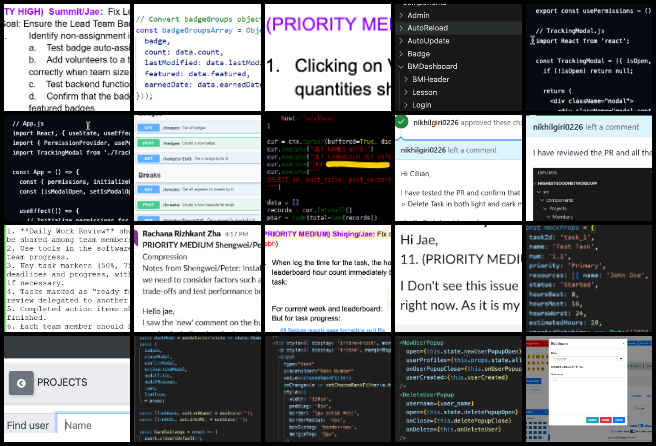
REACTONAUTS SOFTWARE DEVELOPMENT TEAM
The Reactonauts Team’s summary, covering their work on the Highest Good Network software, was managed by Vijeth Venkatesha (Software Engineer). It included Aishwarya Ramesh (Software Engineer), Dhairya Mehta (Software Engineer), Gmon Kuzhiyanikkal (Software Engineer), Haoyue Wen (Software Engineer), Jinxiong You (Software Developer), Khushi Jain (Software Engineer), Mohan Gadde (Software Engineer), Pallavi Thorat (Software Engineer), Peterson Rodrigues dos Santos (Full-Stack MERN Stack Developer), Rishitha Mamidala (Software Engineer), and Saniya Farheen (Software Engineer), Sharadha Shivakumar(Software Engineer). The Highest Good Network software is designing global-sustainability systems across social architecture, construction, production, and maintenance processes. This week, Aishwarya implemented the trophy icon for anniversaries, completing both frontend and backend logic to enable trophy display on weekly reports. Dhairya resolved the “Fix Projects find user function,” optimizing user assignment with an improved sort and search capability. Gmon started his new task on active/inactive team numbers, created a dedicated branch, and sought assistance after a local codebase crash. Haoyue supported team management by handling merge conflicts and improving the FAQ feature. Jinxiong focused on HGN App bug fixes and reviewed developer pull requests. Khushi enhanced the “New Position Setup Page” with adaptable sections and customizable features for a user-friendly experience, while also designing global-sustainability systems to ensure the platform meets evolving environmental standards. Mohan tackled a mobile-view issue affecting team codes’ visibility across devices. Pallavi addressed a dark mode inconsistency on the User Management page and improved the search function for exact name matches. Peterson revamped the 404 error page for responsive design across devices. Rishitha implemented frontend approvals for material purchases and resolved merge conflicts. Saniya worked on a dashboard bug, nearly completing it with additional tweaks needed before review. Sharadha fixed a dropdown cropping issue on the Team Member Tasks section. Lastly, Vijeth focused on bug identification for Phases 1 and 2, managing team updates and coordinating resources for ongoing tasks. See the Highest Good Society and the Highest Good Network pages to learn more on how their work contributes to designing global-sustainability systems. See below to view images of their work.
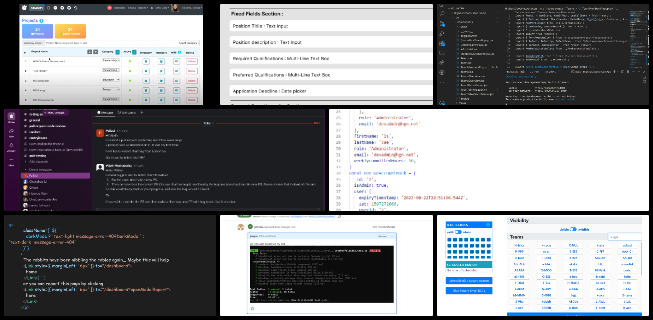
SKYE SOFTWARE DEVELOPMENT TEAM
The Skye Team’s summary covering their work on the Highest Good Network software was managed by Deepthi Arcot Subramanyam (Data Analyst) and Luis Arevalo (Software Engineer) and the team includes Angela Cheng (Full Stack Developer), Abi Liu (Software Developer), Laura Cohen (Software Engineer), Sai Preetham Dongari (Full Stack Developer), Yao Wang (Software Engineer), and Zhimin Liang (Full Stack Developer). The Highest Good Network software supports designing global-sustainability systems, social architecture, construction, production, and maintenance processes. This week, Abi collaborated with teammates to discuss progress updates and improve tracking of ongoing work. They participated in a peer programming session with Denish to help him understand the backend code more effectively. Additionally, Abi continued work on refining a query, facing some challenges in aggregating data accurately to meet specified requirements. Laura worked on the permission change modal by incorporating Reactstrap for styling consistency and adding React hooks to manage state and improve performance. She reviewed code across the HighestGoodNetworkApp to identify elements relevant to the modal, aligning all styling choices with the existing design for a cohesive user interface. Angela contributed to the HGN Software Development project, concentrating on pull request feedback related to email handling improvements. Their efforts are part of a broader initiative focused on designing global-sustainability systems, ensuring that all components are not only functional but also environmentally responsible. She also analyzed feedback to determine effective code modification and debugging strategies, and began implementing changes to combine messages with a BCC approach to address email sending limitations, planning to continue debugging. Yao progressed on the LinkedIn poster by adjusting the page layout and integrating LinkedIn’s API to automate posts, though he encountered 404 and 401 error codes. Testing the API in Postman confirmed its functionality, leading Yao to troubleshoot the backend code to resolve these errors. Sai Preetham focused on multiple tasks within the HGN Software Development project. He worked on integrating a “Reminder to Save Changes” modal on the permissions management page, ensuring it was centered and responsive on smaller screens, and adjusted the green popup notification to display only once after updating permissions. He then managed merge conflicts related to this feature, all while designing global-sustainability systems to enhance the overall impact of the project. He also began addressing a new task involving a name overflow issue on the dashboard, where longer names exceed the designated character limit and are trimmed. Finally, he contributed to the weekly summary and Dropbox updates for Week 12. Zhimin joined the Development Team, reviewed documentation to understand task requirements, and claimed the YouTube auto-poster project, studying relevant documents and task specifics. She researched YouTube auto-poster functionality, setting up the necessary account and authorization through documents and setup videos. See below for the team’s work. See the Highest Good Society and Highest Good Network pages for more on how this relates to designing global-sustainability systems. See below for some of the team’s work.
SOFTWARE PR REVIEW TEAM A-K
The PR Review Team’s summaries for team members’ names starting with A-K and covering their work on the Highest Good Network software was managed by Anoushka Hazari (Data Analyst). The Highest Good Network software is a foundation of what we’ll be using to measure our results for designing global-sustainability systems. This week’s active members of this team were: Abdelmounaim Lallouache (Software Developer), Anjineyulu Annavarapu (Software Developer), Ashrita Cherlapally (Software Engineer), Carl Bebli (Software Engineer), Haoqing Zhu (Software Engineer), Humera Naaz (Mern Developer), Koushica Bosadi Ulaganathan (Software Engineer) and Kurtis Ivey (Full Stack Developer). They reviewed all the Highest Good Network PRs (Pull Requests) shared in this week’s update. Learn more about how the Highest Good Network will measure and assist in designing global-sustainability systems in the Highest Good Network open source hub. The collage below shows a compilation of the work from this team.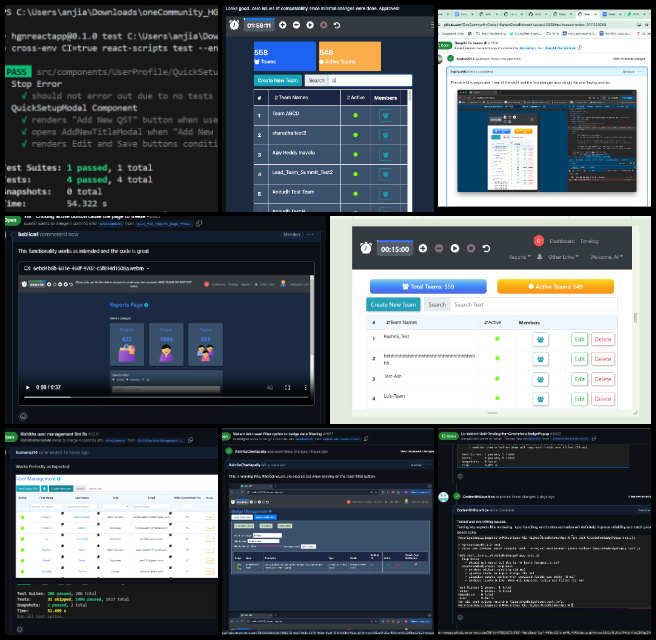
SOFTWARE PR REVIEW TEAM L-Sg
The PR Review Team’s summary for team members’ names starting with L-Sg and covering their work on the Highest Good Network software was managed by Saumit Chinchkhandi (Administrative Assistant and Software Engineer). The Highest Good Network software is a foundation of what we’ll be using to measure our results of designing global-sustainability systems. This week’s active members of this team were: Nahiyan Ahmed (Full Stack Software Developer), Nathan Hoffman (Software Engineer), Riu Liu (Software Engineer), Rupa Rajesh Bhatia (Software Engineer), and Samarth Bhadane (Software Engineer). They reviewed all the Highest Good Network PRs (Pull Requests) shared in this week’s update. Learn more about how the Highest Good Network measures and assists in designing global-sustainability systems in the Highest Good Network open source hub. The collage below shows a compilation of the work from this team.
SOFTWARE PR REVIEW TEAM Sh-Z
The PR Review Team’s summary for team members’ names starting with Sh-Z and covering their work on the Highest Good Network software was managed by Olawunmi “Ola” Ijisesan (Administrative and Management Support) and Samarth Urs (Administrative Assistant and Data Analyst). The Highest Good Network software is a foundation of what we’ll be using to measure our results of designing global-sustainability systems. This week’s active members of this team were: Sheetal Mangate (Software Engineer), Shengwei “Peter” Peng (Software Engineer), Supriya Sudini (MERN Stack Developer), Varun Elangovan (Software Engineer), Neeharika Koniki (Software Engineer, Developer), and Yiyun Tan (Software Engineer). They reviewed all the Highest Good Network PRs (Pull Requests) shared in this week’s update. Learn more about how the Highest Good Network will measure and assist in designing global-sustainability systems in the Highest Good Network open source hub. The collage below shows a compilation of the work from this team.
AND WE PRODUCED THIS WEEKLY UPDATES BLOG – CLICK HERE TO SUBSCRIBE
FOLLOW ONE COMMUNITY’S PROGRESS (click icons for our pages)
INVESTOR PAGES
GET INVOLVED
DONATE | WAYS ANYONE CAN HELP | MEMBERSHIP
CLICK HERE FOR ALL PAST UPDATES
 One Community
One Community

